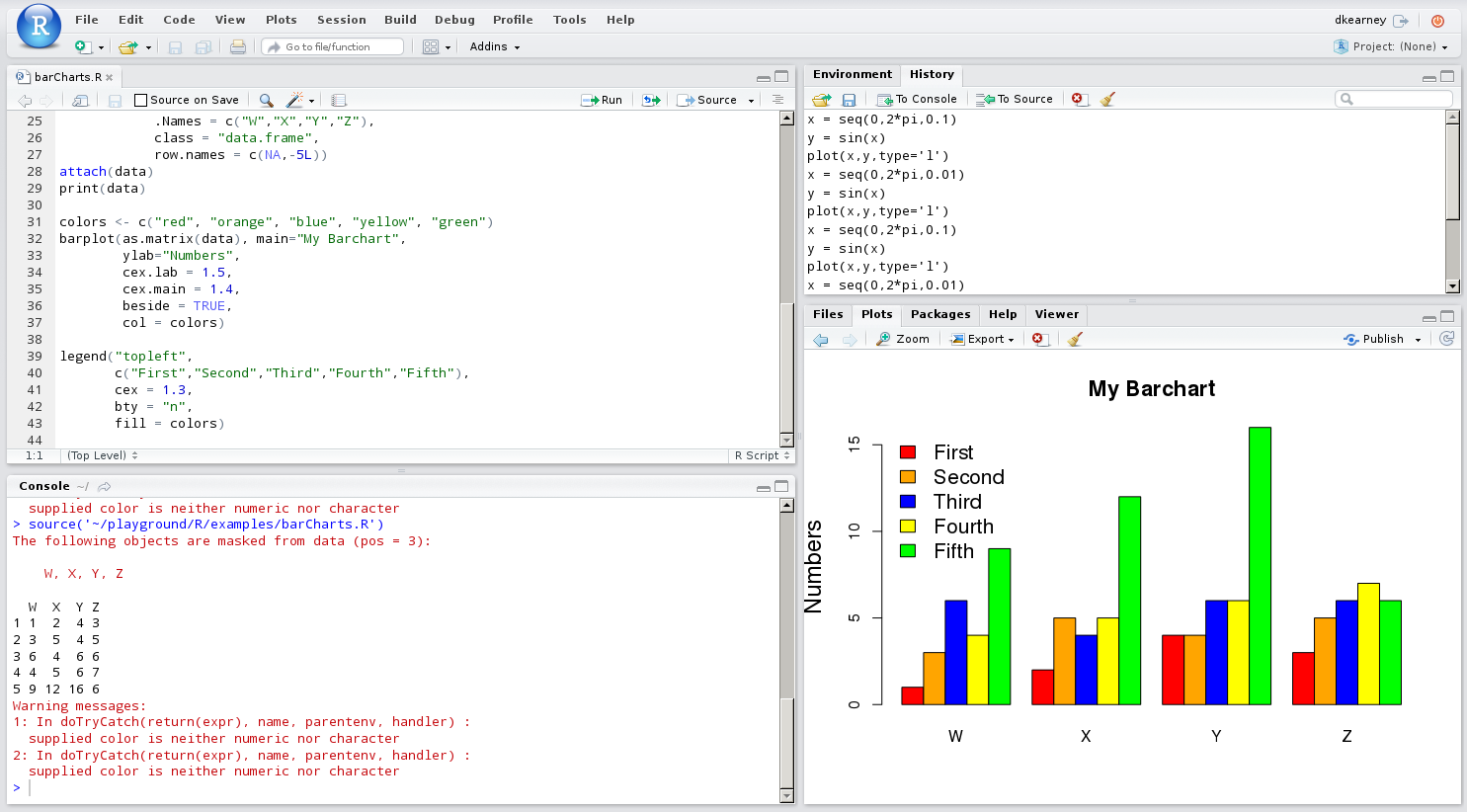

- #How to open r studio in the r gui software#
- #How to open r studio in the r gui code#
- #How to open r studio in the r gui Pc#
#How to open r studio in the r gui software#
R is an open-source software environment for statistical computing and graphics that runs on Windows, Mac OS, and many UNIX platforms. However, 99% most of the time, you should be using the Source rather than the Console.Jump to: Installing / Configuring / Introducing
#How to open r studio in the r gui code#
So as you can see, you can execute code either by running it from the Source or by typing it directly into the Console. Only type directly into the Console to de-bug or do quick analyses. Tip: Try to write most of your code in a document in the Source. Alternatively, you can use the hot-key “Command + Return” on Mac or “Control + Enter” on Windows. Then, type the same code into the Source, and then send the code to the Console by highlighting the code and clicking the ``Run" button on the top right hand corner of the Source window. For now, we’re happy if we just see the 2.

Don’t worry about the for now, we’ll get to that later. Try calculating 1+1 by typing the code directly into the console - then press Enter.
#How to open r studio in the r gui Pc#
Alternatively, you can use the hot-key “Command + Return” on Mac, or “Control + Enter” on PC to send all highlighted code to the console. A faster way is to highlight the code you wish to evaluate and clicking on the “Run” button on the top right of the Source. There are many ways to send your code from the Source to the console. To have R actually evaluate your code, you need to first ‘send’ the code to the Console (we’ll talk about this in the next section). You’ll notice that when you’re typing code in a script in the Source panel, R won’t actually evaluate the code as you type. That way, if something on your computer crashes while you’re working, R will have your code waiting for you when you re-open RStudio. Before you start typing in an untitled R script, you should always save the file under a new file name (like, “2015PirateSurvey.R”). When you open RStudio, it will automatically start a new Untitled script. Don’t worry, R scripts are just text files with the “.R” extension.

The source pane is where you create and edit ``R Scripts" - your collections of code. The code won’t be evaluated until you send it to the Console.
18.5 Chapter 8: Matrices and Dataframesįigure 1.8: The Source contains all of your individual R scripts. 18.4 Chapter 7: Indexing vectors with. 17.4 Loops over multiple indices with a design matrix. 17.3 Updating a container object with a loop. 17.2 Creating multiple plots with a loop. 17.1.2 Adding the integers from 1 to 100. 16.4.4 Storing and loading your functions to and from a function file with source(). 16.4.2 Using stop() to completely stop a function and print an error. 16.3 Using if, then statements in functions. 16.2.3 Including default values for arguments. 16.2 The structure of a custom function. 16.1 Why would you want to write your own function?. 15.5.2 Transforming skewed variables prior to standard regression. 15.5.1 Adding a regression line to a plot. 15.5 Logistic regression with glm(family = "binomial". 15.4 Regression on non-Normal data with glm(). 15.3 Comparing regression models with anova(). 15.2.6 Getting an ANOVA from a regression model with aov(). 15.2.5 Center variables before computing interactions!. 15.2.4 Including interactions in models: y ~ x1 * x2. 15.2.3 Using predict() to predict new data from a model. 15.2.2 Getting model fits with fitted.values. 15.2.1 Estimating the value of diamonds with lm(). 14.7 Repeated measures ANOVA using the lme4 package. 14.6 Getting additional information from ANOVA objects. 14.5 Type I, Type II, and Type III ANOVAs. 14.1 Full-factorial between-subjects ANOVA. 13.5.1 Getting APA-style conclusions with the apa function. 13.1 A short introduction to hypothesis tests. 12.3.1 Complex plot layouts with layout(). 12.3 Arranging plots with par(mfrow) and layout(). 11.10 Test your R might! Purdy pictures. 11.8 Saving plots to a file with pdf(), jpeg() and png(). 11.7.5 Combining text and numbers with paste(). 10.6 Test your R might!: Mmmmm…caffeine. 9.6.3 Reading files directly from a web URL. 9.1.1 Why object and file management is so important. 8.7 Test your R might! Pirates and superheroes. 7.3.1 Ex: Fixing invalid responses to a Happiness survey. 7.2.2 Counts and percentages from logical vectors. 
6.2.3 Sample statistics from random samples. 6.2.2 Additional numeric vector functions. 4.4.4 Example: Pirates of The Caribbean. 4.3.1 Commenting code with the # (pound) sign. 4.3 A brief style guide: Commenting and spacing. 4.2.1 Send code from an source to the console. 1.5.2 Getting R help and inspiration online.








 0 kommentar(er)
0 kommentar(er)
